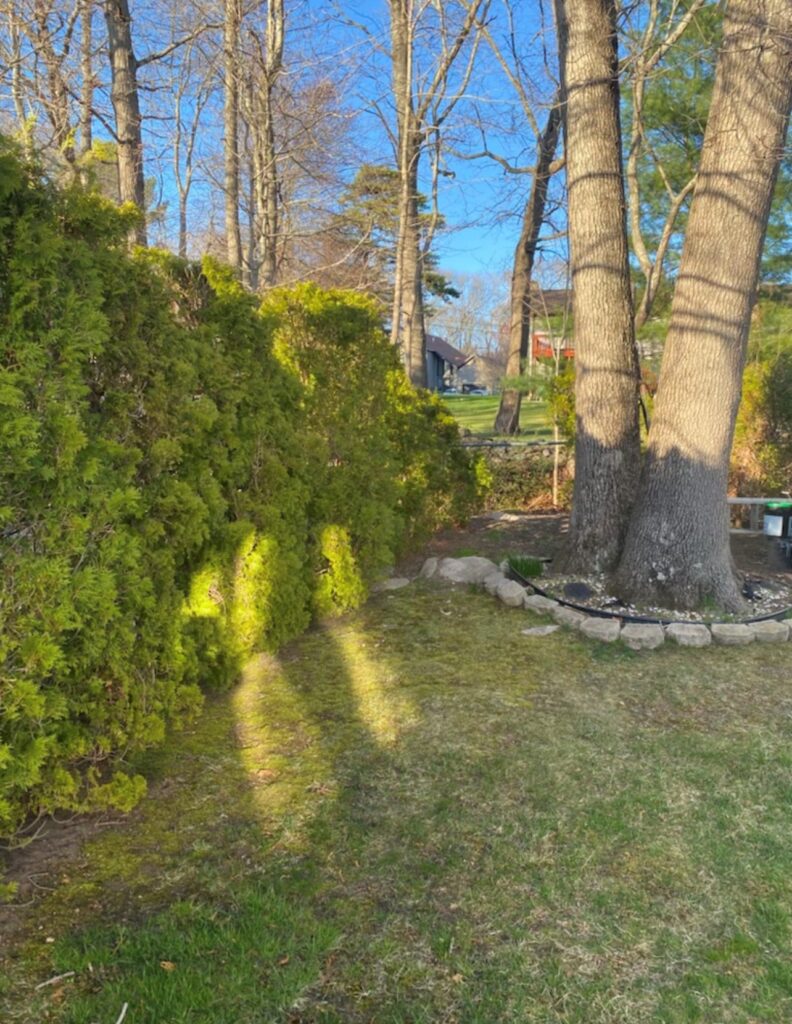-

All of us want our trees to be green and healthy, but sometimes they are not. This is because chlorosis has set in, and it’s time for a diagnosis. Chlorosis is the scientific term for yellowing or turning brown leaves on a tree. It can be caused by everything from polluted water to building foundations to electromagnetic fields, but it generally occurs because of one primary cause: insufficient nutrients. The most common symptom is trees with small leaves that don’t have enough chlorophyll and are pale green or white underneath. Below are some things you should know if your tree displays chlorosis symptoms (or any other condition).
The good news is that chlorosis can be reversed if you take the proper steps. The first thing to do is move your tree away from the offending source and see if it improves over time. You may also want to think about planting a new one in another location too. If moving doesn’t work, try fertilizing with organic fertilizer or iron supplement every six months for up to two years—but only after consulting a professional arborist.
What Causes Chlorosis in Trees?
The causes of chlorosis often vary depending on what type of plant organism they affect, but there’s one thing in common: healthy trees need iron. Without it, their chlorophyll levels drop, and the leaves turn yellowish or white underneath.
Why your Trees aren’t Greener
Healthy trees are green because of chlorophyll. Chlorophyll is the green pigment found in plants that helps them produce energy from sunlight and blocks some harmful wavelengths. Without enough iron, your plant may look yellow or white underneath its leaves due to a lack of chlorophyll production.
Do You See Brown Spots on Your Leaves?
Spots can be caused by many things—too much sun exposure, overfertilizing with nitrogen-rich fertilizers, a nutrient deficiency, fungal infection like leaf spot disease.
Some Factors that make your tree lose its pigment
Those factors include:
Tree Disease: When trees have a disease, their leaves may turn yellow or white. Examples of tree diseases that cause yellow leaves are:
Nutrient Deficiency: Trees whose soil is low in nitrogen and phosphorus are more likely to suffer from chlorosis.
Excessive Nitrogen Fertilizer Use: Excess use of fertilizer can cause the tree’s roots to become unable to take up iron as they would typically do if there were not excess nitrogen present.
How to make your Trees Greener
Making your trees greener is a gradual yet consistent practice. This practice enables your Tree to remain green. That’s why you need to hire the services of a tree company that renders these services expertly and professionally.
Tree Service: Tree service can also be called tree care. In general, the term tree care refers to all gardeners and landscaping professionals who perform work on trees. Tree care is applying arboricultural methods like pruning, trimming, and felling/thinning in built environments.
Tree Service Company Near me: There are many tree service companies near you.
Professional Tree Service: Professional services always make a difference in any field, including landscaping and gardening. A professional will know what is best for your trees based on their expert knowledge of the subject matter they’re working with. They also have access to more expensive materials and are difficult to find at retail outlets or home improvement stores. Hiring a company that specializes in these types of jobs can save you time, money, and aggravation because it provides experts who focus exclusively on one thing – Trees!
These companies offer services that make your trees healthier and greener, and they include:
Tree Trimming: Trees that have been pruned or trimmed within the past year grow greener leaves. As old leaves are cut away, new young leaves grow.
Brush Chipping: Brush chipping is the process of collecting all branches and shrubs that have died or need pruning.
Mulching: Mulching is a method where organic matter such as leaves, pine needles, straws, etc., can be applied on top of your tree’s soil surface. This practice helps retain water during droughts, which in turn keeps roots healthy and also reduces weed growth beneath trees.
Cleaning water sources: If you have contaminated sewage system pipes where you use filthy water for irrigation purposes, your plants will be less chlorophyll-filled due to dirty water entering them, which is blocked by sunlight. Cleaning up these contaminated areas while trying to remove all of the dirt and other unwanted substances are essential for future green leaves production through sun rays being able to get through onto plant beds.
Soil Fertilization: Trees require nitrogen for healthy green leaves, so it’s important to add fertilizer with high Nitrogen levels every year but only when needed because excess use could lead to chlorosis disease (yellowing).
Stump Grinding: Stump grinding is an intricate process that excavates the tree’s stump without removing the root. Trees and other plants need time to regenerate chlorophyll, so don’t rush the process. If you have trees that are constantly being cut down for whatever reason, then they won’t be able to replace their leaves in a timely fashion due to the high demand for decomposing organisms because it provides them with an environment where nutrients can easily flow through.
Trees require sunlight blocked by dirt or any object blocking its way from passing onto plant beds. Cleaning up these contaminated areas while trying to remove all of the dirt and other unwanted substances are essential for future green leaves production through sun rays being able to get through onto plant beds. Soil fertilization is necessary, too but only when needed because excess use could lead to chlorosis disease
Tree Surgery: the repair of damaged trees, as by the removal of diseased parts, filling of cavities, and prevention of further decay, and by strengthening branches with braces. This will create room for the usage of sunlight and allow the total supply of chlorophyll with the help of the sun.
Tree falling: The falling of dead trees or trees that have been affected by chlorosis disease should be felled to create room for other trees to grow. Trees require sunlight to maintain healthy leaves, so it’s crucial for future trees that need the sun and room of space to be provided to keep a green environment.
Tree Removal: Trees must be removed if they are rotting or have been afflicted with a disease such as chlorosis because this can infect other nearby vegetation leading its leaves to turn yellow or brown.
The removal of diseased parts in older trees will prevent future trees in cavities, and prevention of further decay will create room for sunlight to enter into your green leaves and allow chlorophyll production with the help of the sun. Tree Felling: Dead or infected trees should be felled not to block future trees that need sunlight and space to thrive. The total removal of affected trees is essential to maintain healthy leaves on new plantings by preventing infection onto newly planted plants which could lead them towards death too.
Firewood: Felled trees and removed trees can be used for firewoods instead of allowing them to rot away and become diseased.
Summary
Making your trees greener is not as simple as it sounds. Trees have many functions and needs that need to be taken care of to stay healthy, such as getting the proper amount of sunlight from a hole or just removing diseased parts.
That is why you need the proper orientation of how to care for your trees and make your environment awesome and beautiful.
Are Trees Damaging Your Property?
Sometimes one bad tree can damage your entire landscape and even your home. Consult with our trained staff for a free assessment
Available 24/7 for Emergency Service
Did lightning strike? That’s our specialty. One call and we will dispatch our emergency response team to handle all your emergency tree service needs
Hours
Monday: 7:30am - 6:30pm
Tuesday: 7:30am - 6:30pm
Wednesday: 7:30am - 6:30pm
Thursday: 7:30am - 6:30pm
Friday: 7:30am - 6:30pm
Saturday: 7:30am - 6:30pm
Sunday: Closed
We Are Serving Plymouth, MA | Milton, MA | Canton, MA
Copyright © 2022 - Lighting Strikes Tree LLC. All Rights Reserved.

